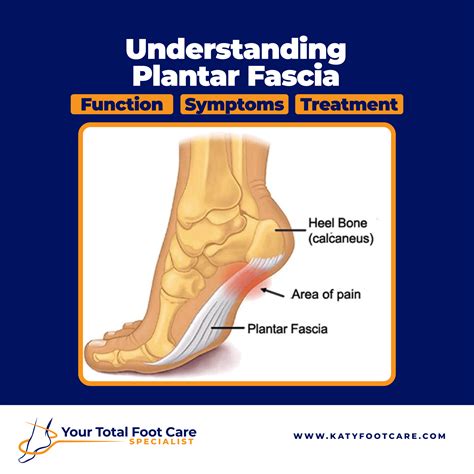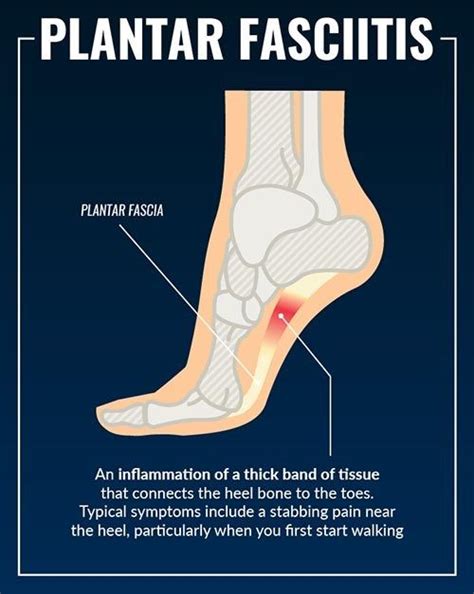Intro
Plantar fasciitis is a common condition that affects the heel and bottom of the foot, causing pain and discomfort. It occurs when the plantar fascia, a band of tissue that supports the arch of the foot, becomes inflamed or irritated. This condition can be caused by a variety of factors, including overuse, poor foot mechanics, and inadequate footwear. Fortunately, there are several exercises that can help alleviate the symptoms of plantar fasciitis and promote healing.
The importance of exercises for plantar fasciitis cannot be overstated. These exercises can help stretch and strengthen the foot and ankle, reducing tension on the plantar fascia and promoting recovery. Additionally, exercises can help improve foot mechanics, reducing the risk of further injury and promoting overall foot health. By incorporating exercises into their treatment plan, individuals with plantar fasciitis can reduce their symptoms, improve their mobility, and enhance their overall quality of life.
Plantar fasciitis is a condition that can affect anyone, regardless of age or activity level. However, it is most common among athletes, runners, and individuals who spend a lot of time on their feet. The condition can cause significant pain and discomfort, making it difficult to perform daily activities. By understanding the causes and symptoms of plantar fasciitis, individuals can take steps to prevent and treat the condition, reducing their risk of chronic pain and disability.
Understanding Plantar Fasciitis

Causes and Symptoms of Plantar Fasciitis
The causes of plantar fasciitis are varied and complex, involving a combination of factors that can contribute to the development of the condition. Some of the most common causes of plantar fasciitis include: * Overuse or repetitive strain on the foot and ankle * Poor foot mechanics, such as flat feet or high arches * Inadequate footwear, such as shoes that are too tight or do not provide sufficient support * Age, as the plantar fascia can become less flexible and more prone to injury with age * Obesity, as excess weight can put additional strain on the foot and ankleThe symptoms of plantar fasciitis can vary, but they often include:
- Pain and stiffness in the heel and bottom of the foot
- Swelling and redness in the affected area
- Limited mobility and stiffness in the foot and ankle
- Pain that is worse in the morning or after periods of rest
Exercises for Plantar Fasciitis

Strengthening Exercises for Plantar Fasciitis
In addition to stretching exercises, there are several strengthening exercises that can help alleviate the symptoms of plantar fasciitis. Some of the most effective strengthening exercises include: * Toe curls: Sit on the floor with your legs straight out in front of you. Lift your toes up and curl them under, holding for 5-10 seconds. Repeat 10-15 times. * Heel raises on a balance board: Stand on a balance board or BOSU ball with your feet shoulder-width apart. Slowly raise up onto your tiptoes, then lower back down. Repeat 10-15 times. * Single-leg squats: Stand on one leg, keeping the other foot lifted off the ground. Slowly lower yourself down into a squat, keeping your back straight and your core engaged. Push back up to standing and repeat on the other leg. Repeat 10-15 times on each leg.Tips for Preventing Plantar Fasciitis

Additional Tips for Preventing Plantar Fasciitis
In addition to the tips listed above, there are several other strategies that can help prevent plantar fasciitis. Some of the most effective strategies include: * Using orthotics or shoe inserts: Orthotics or shoe inserts can help provide additional support and cushioning for the foot, reducing the risk of plantar fasciitis. * Avoiding hard surfaces: Try to avoid walking or running on hard surfaces, such as concrete or asphalt. Instead, opt for softer surfaces, such as grass or a treadmill. * Taking regular breaks: Take regular breaks to rest and stretch your feet and ankles, especially if you have a job that involves standing or walking for long periods.Conclusion and Next Steps

We invite you to share your thoughts and experiences with plantar fasciitis in the comments below. Have you tried any of the exercises or strategies listed above? What has worked best for you? By sharing your story, you can help others who are struggling with this condition. Additionally, if you have any questions or concerns, please don't hesitate to ask. We are here to help and support you on your journey to healing and recovery.
What is plantar fasciitis and how is it caused?
+Plantar fasciitis is a condition that occurs when the plantar fascia, a band of tissue that supports the arch of the foot, becomes inflamed or irritated. It can be caused by a variety of factors, including overuse, poor foot mechanics, and inadequate footwear.
What are the symptoms of plantar fasciitis and how can they be treated?
+The symptoms of plantar fasciitis can include pain and stiffness in the heel and bottom of the foot, swelling and redness in the affected area, and limited mobility and stiffness in the foot and ankle. Treatment typically involves a combination of rest, ice, compression, and elevation, as well as stretching and strengthening exercises.
How can I prevent plantar fasciitis and reduce my risk of developing the condition?
+To prevent plantar fasciitis, it is essential to wear supportive shoes, stretch regularly, maintain a healthy weight, and avoid overuse. Additionally, using orthotics or shoe inserts, avoiding hard surfaces, and taking regular breaks can help reduce the risk of developing the condition.
